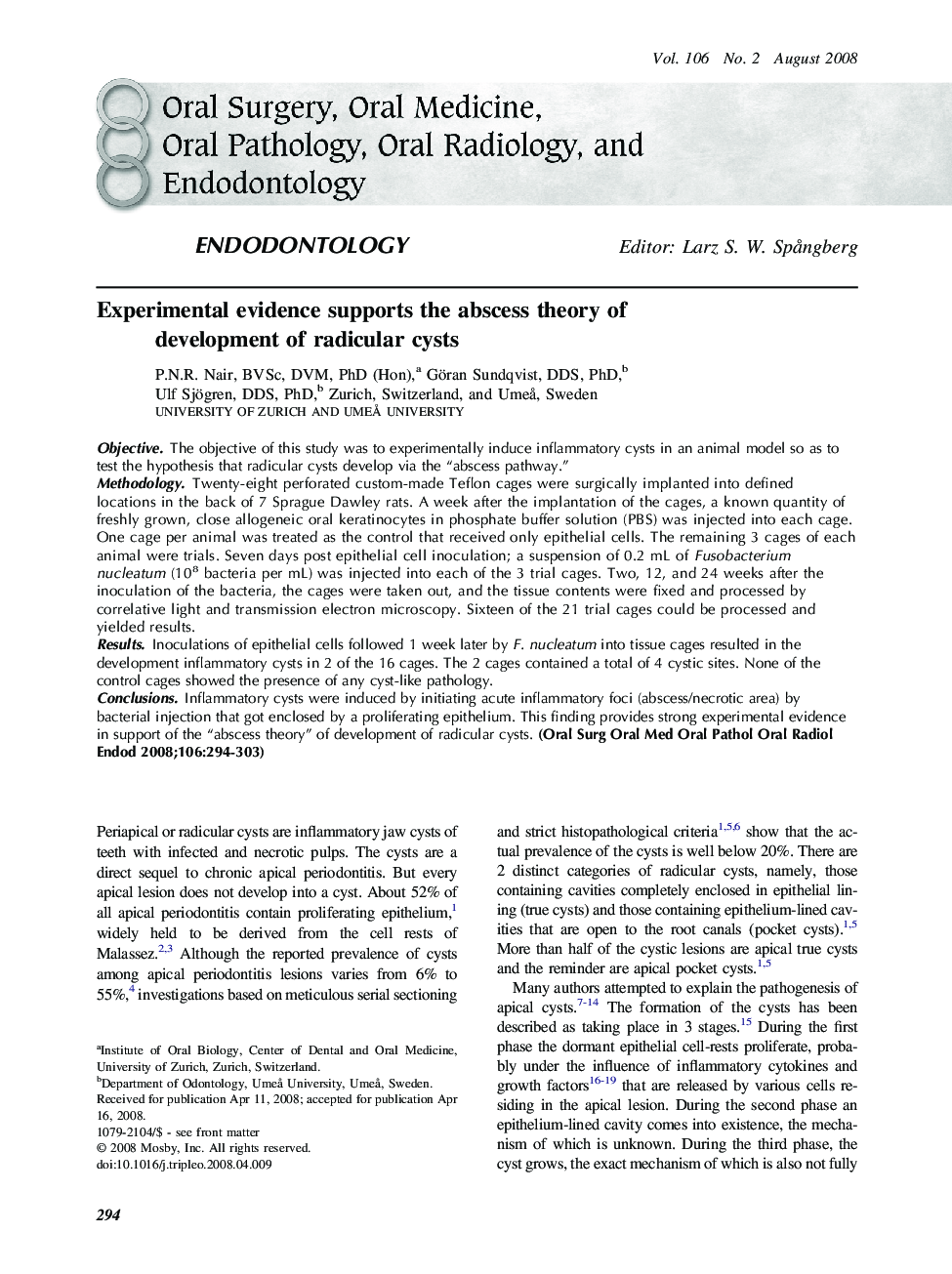| Article ID | Journal | Published Year | Pages | File Type |
|---|---|---|---|---|
| 3168587 | Oral Surgery, Oral Medicine, Oral Pathology, Oral Radiology, and Endodontology | 2008 | 10 Pages |
ObjectiveThe objective of this study was to experimentally induce inflammatory cysts in an animal model so as to test the hypothesis that radicular cysts develop via the “abscess pathway.”MethodologyTwenty-eight perforated custom-made Teflon cages were surgically implanted into defined locations in the back of 7 Sprague Dawley rats. A week after the implantation of the cages, a known quantity of freshly grown, close allogeneic oral keratinocytes in phosphate buffer solution (PBS) was injected into each cage. One cage per animal was treated as the control that received only epithelial cells. The remaining 3 cages of each animal were trials. Seven days post epithelial cell inoculation; a suspension of 0.2 mL of Fusobacterium nucleatum (108 bacteria per mL) was injected into each of the 3 trial cages. Two, 12, and 24 weeks after the inoculation of the bacteria, the cages were taken out, and the tissue contents were fixed and processed by correlative light and transmission electron microscopy. Sixteen of the 21 trial cages could be processed and yielded results.ResultsInoculations of epithelial cells followed 1 week later by F. nucleatum into tissue cages resulted in the development inflammatory cysts in 2 of the 16 cages. The 2 cages contained a total of 4 cystic sites. None of the control cages showed the presence of any cyst-like pathology.ConclusionsInflammatory cysts were induced by initiating acute inflammatory foci (abscess/necrotic area) by bacterial injection that got enclosed by a proliferating epithelium. This finding provides strong experimental evidence in support of the “abscess theory” of development of radicular cysts.
